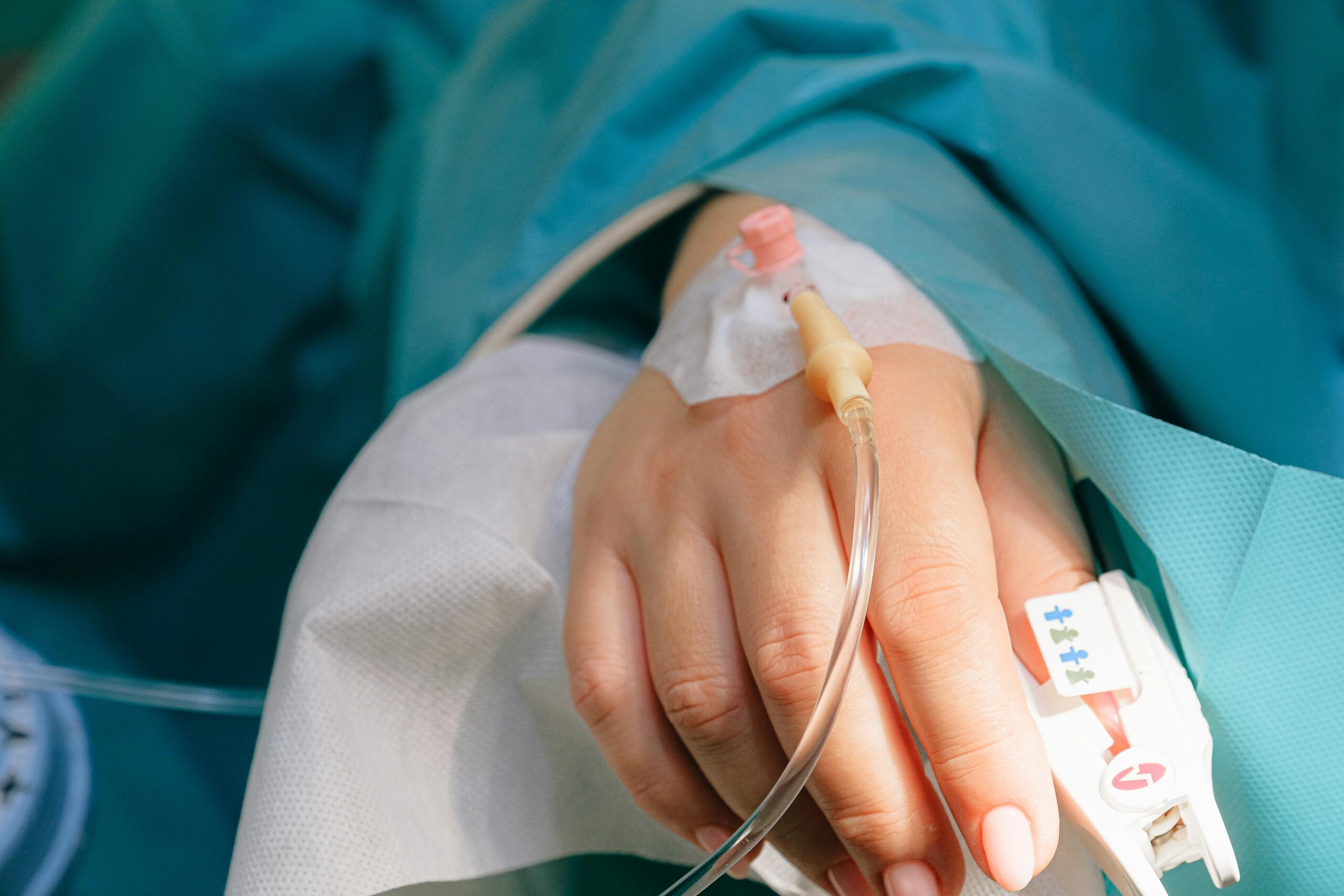Caring for a loved one diagnosed with Guillain-Barré Syndrome (GBS) can feel overwhelming, but knowledge and preparation empower you to provide the best possible care. Guillain-Barré Syndrome is a rare neurological disorder where the immune system mistakenly attacks the peripheral nervous system. Early recognition, timely intervention, and a supportive caregiving environment can significantly impact recovery and well-being. This guide offers an in-depth look at GBS—its symptoms, risk factors, diagnosis, and treatment—with a focus on caregiving strategies and tools. Leveraging caregiver technology, such as health monitoring apps, documentation aids, and communication platforms, can enhance your ability to manage care effectively.
Understanding Guillain-Barré Syndrome
Guillain-Barré Syndrome (GBS) is the most common cause of acute flaccid paralysis worldwide, affecting approximately 1-2 individuals per 100,000 annually. It is an acute, immune-mediated polyradiculoneuropathy characterized by rapid-onset muscle weakness and potential paralysis. The condition typically follows an antecedent illness, most commonly a respiratory or gastrointestinal infection, though in some cases, vaccinations or other triggers may precede its onset (Finsterer, 2022). GBS manifests as muscle weakness, tingling sensations, or paralysis. It affects individuals differently, with symptoms often starting in the feet or legs and progressing upward. While GBS is rare, awareness is essential for caregivers to recognize early signs and seek timely medical intervention.
Types of Guillain-Barré Syndrome
GBS encompasses various subtypes, each presenting unique challenges and requiring tailored caregiving approaches:
Acute Inflammatory Demyelinating Polyradiculoneuropathy (AIDP)
Predominant in Europe and North America, AIDP is characterized by demyelination of peripheral nerves, leading to muscle weakness starting in the legs and ascending upwards. It is the most common subtype in Western countries and generally has a better prognosis compared to other subtypes.
Miller Fisher Syndrome (MFS)
This variant primarily affects eye movement, coordination, and balance. MFS is more prevalent in Asia and is distinguished by the presence of ophthalmoplegia (eye muscle weakness), ataxia (loss of coordination), and areflexia (absence of reflexes). Understanding this subtype is crucial as it requires specific therapeutic approaches to manage its unique symptoms.
Acute Motor Axonal Neuropathy (AMAN) and Acute Motor-Sensory Axonal Neuropathy (AMSAN)
These subtypes are more severe and are frequently observed in countries like China and Mexico. AMAN affects motor nerves, while AMSAN impacts both motor and sensory nerves, often resulting in more profound and prolonged weakness. AMAN and AMSAN are associated with a higher risk of requiring mechanical ventilation and longer recovery periods.
Understanding these subtypes is crucial for caregivers, as each may present different symptoms and recovery trajectories. For instance, AMAN is typically more severe than AIDP, requiring more intensive support and monitoring. Additionally, the presence of specific antibodies, such as GM1 or GQ1b, can help in identifying the subtype and tailoring the treatment accordingly (Finsterer, 2022).
Causes and Risk Factors
What Causes Guillain-Barré Syndrome?
GBS often follows infections, particularly those caused by Campylobacter jejuni (C. jejuni), Mycoplasma pneumoniae, and viruses such as Cytomegalovirus (CMV), Zika virus, and SARS-CoV-2. Approximately 75% of GBS cases are preceded by an infection, which triggers the immune system to mistakenly attack peripheral nerves through a mechanism known as molecular mimicry (Finsterer, 2022).
Risk Factors
While GBS is not contagious or hereditary, being aware of recent infections in your loved one’s health history can aid in early detection and intervention. Additionally, certain genetic factors may influence susceptibility and severity, although the exact reasons why some individuals develop GBS while others do not remain partially understood. GBS is not limited to infections alone. Vaccinations, although rarely, have been associated with the onset of GBS. However, the risk is extremely low and is often outweighed by the benefits of vaccination. Other non-infectious triggers include surgical procedures, trauma, and certain autoimmune conditions. Understanding these risk factors helps caregivers remain vigilant and proactive in monitoring the health of their loved ones.
Recognizing Symptoms
Early recognition of GBS symptoms is vital for timely treatment and better outcomes. Key symptoms include:
Tingling or Numbness
Often starting in the extremities (feet or hands), progressing proximally. This sensory disturbance is usually symmetrical and can affect both sides of the body simultaneously.
Muscle Weakness or Paralysis
Typically symmetrical and ascending, potentially affecting the legs, arms, and upper body. In severe cases, this can lead to complete paralysis, requiring intensive medical support.
Facial Weakness
Difficulty with facial movements, such as speaking, chewing, or swallowing. This can lead to challenges in communication and eating, necessitating specialized care.
Autonomic Dysfunction
Changes in heart rate, blood pressure, and gastrointestinal function. Autonomic instability can result in serious complications like cardiac arrhythmias or blood pressure fluctuations, requiring constant monitoring.
Respiratory Muscle Weakness
In severe cases, leading to breathing difficulties requiring mechanical ventilation. Respiratory failure is a critical concern and necessitates immediate medical intervention.
Recognizing these symptoms early and seeking medical attention can significantly influence the course of the disease and recovery prospects. Caregivers should monitor for any signs of respiratory distress, difficulty swallowing, or unusual changes in heart rate and blood pressure, as these may indicate the need for urgent medical care.
The Importance of Monitoring and Early Detection
Emphasizing the role of health tracking is crucial in managing GBS effectively. Introducing tools or techniques for monitoring, such as journals, apps, and devices, can aid caregivers in maintaining comprehensive records of the patient’s condition. At Digital Elevate Partners, we’re transforming medical care with a comprehensive suite of digital solutions. Our flagship product, advoMedix, empowers parents to monitor their child’s health seamlessly. But that’s just the beginning. From pediatric care to elder care and patient management systems, our upcoming apps will redefine how medical needs are managed across all stages of life.
Why advoMedix?
For parents, tracking symptoms, managing allergies, and monitoring developmental milestones can be daunting. advoMedix makes it easy by offering a one-stop platform to log medical episodes, track symptoms, and manage care plans.
Key Features
Symptom Tracking: Record and monitor symptoms for timely interventions. Consistent tracking reveals patterns and triggers, aiding chronic condition management (TEAMSCOPE).
Allergy Management: Document allergy symptoms, medication responses, and triggers to improve comfort and safety (AHN.ORG).
Developmental Monitoring: Track growth milestones and address concerns promptly for early interventions (AAP).
The Future of Medical Solutions
We’re not stopping at pediatric care. Our pipeline includes a holistic range of apps:
Elder Care Solutions: To simplify care management and track health for aging family members.
Veteran Claim and Health Tracking: Tools specifically designed to assist veterans in managing their health and navigating claims.
Patient Management Systems: For healthcare providers to streamline patient care, track medical histories, and enhance patient outcomes.
Join the Digital Elevate Journey
Be part of a healthcare revolution that’s family-focused, tech-driven, and life-changing. Stay tuned for the release of new products designed to meet the diverse medical needs of your loved ones. At Digital Elevate Partners, we’re committed to leveraging technology to deliver better health outcomes for all ages.
Diagnostic and Treatment Options
Diagnostic Procedures
Diagnosing GBS involves a combination of clinical evaluation and specialized tests to differentiate it from other neurological conditions. Understanding these procedures can help caregivers support their loved ones effectively.
Clinical Evaluation: A thorough neurological exam assesses muscle strength, reflexes, and sensory function. Reduced or absent reflexes are a common finding. The progression of weakness is typically rapid, reaching its peak within four weeks.
Lumbar Puncture: This procedure analyzes cerebrospinal fluid (CSF) for elevated protein levels without an increase in white blood cells, a condition known as “dissociation cyto-albuminique,” which is a hallmark of GBS. Elevated protein levels indicate nerve inflammation and damage.
Electromyography (EMG) and Nerve Conduction Studies (NCS): These tests measure the electrical activity of muscles and the speed of nerve signals, respectively, helping to identify demyelination or axonal damage. EMG can reveal the extent of muscle involvement, while NCS assesses the integrity of nerve conduction.
Imaging Tests (MRI): While not routinely required, MRI can help rule out other conditions and may show thickening or enhancement of nerve roots. In cases where the diagnosis is uncertain, MRI can provide additional information to support the diagnosis.
Ganglioside Antibody Testing: Elevated levels of specific antibodies, such as GM1 or GQ1b, can support the diagnosis and help identify the GBS subtype. These antibodies are often present in specific variants like AMAN or MFS.
Given the complexity of the diagnostic process, caregivers play a crucial role in ensuring that all necessary tests are performed promptly and that their loved ones receive comprehensive medical evaluation. Additionally, understanding the diagnostic criteria, such as the Brighton criteria, can help caregivers advocate effectively for timely and accurate diagnosis.
Differential Diagnosis
It’s essential to differentiate GBS from other neurological disorders that may present with similar symptoms, such as:
Chronic Inflammatory Demyelinating Polyneuropathy (CIDP): Unlike GBS, CIDP has a more chronic course and is not typically preceded by an infection. CIDP requires different management strategies, emphasizing the importance of accurate diagnosis.
Spinal Muscular Atrophy (SMA) and Amyotrophic Lateral Sclerosis (ALS): These conditions involve motor neuron degeneration but have different clinical presentations and progression patterns. SMA is often genetic, while ALS is a progressive neurodegenerative disorder.
Myasthenia Gravis: Characterized by muscle weakness that worsens with activity, distinct from the ascending paralysis seen in GBS. Myasthenia Gravis involves the neuromuscular junction rather than peripheral nerves.
Critical Illness Neuropathy: Occurs in patients with severe systemic illness but lacks the acute onset and specific immune-mediated pathology of GBS. It is often associated with prolonged ICU stays and sepsis.
Properly distinguishing GBS from these conditions is crucial for appropriate treatment and management. Caregivers should be aware of the different presentations and work closely with healthcare providers to ensure accurate diagnosis and effective care planning.
Treatment Options and Recovery Support
Timely and appropriate treatment is essential for improving outcomes in GBS. The primary treatments focus on modulating the immune response and supporting the body’s functions during recovery.
Plasma Exchange (Plasmapheresis)
This procedure removes harmful antibodies from the blood, reducing the immune system’s attack on the nervous system. It is most effective when initiated within the first four weeks of symptom onset. Plasmapheresis typically involves removing plasma and replacing it with a substitute, thereby reducing the concentration of pathogenic antibodies.
Intravenous Immunoglobulin (IVIG)
IVIG provides healthy antibodies that can neutralize the harmful ones, mitigating the immune attack. It is an alternative to plasmapheresis and is often preferred due to its ease of administration. IVIG is usually administered over several days and has been shown to improve muscle strength and reduce the severity of symptoms.
Supportive Care
This includes physical therapy to restore mobility and strength, occupational therapy to assist with daily activities, and respiratory support if breathing muscles are affected. Supportive care also involves managing complications such as blood clots, pressure sores, and infections. Caregivers should ensure that the patient receives comprehensive rehabilitation to maximize recovery potential.
Experimental Treatments
Ongoing clinical trials are investigating complement inhibitors and other disease-modifying therapies that may offer additional benefits in limiting nerve injury and promoting recovery. Complement inhibitors target specific components of the immune system, potentially reducing the extent of nerve damage.
Prognosis and Recovery
Most patients with GBS respond favorably to immunotherapy, with significant recovery occurring within months. However, some individuals may experience lingering effects such as fatigue, weakness, or numbness. A small percentage of patients may suffer severe disability or succumb to the disease. Prognostic factors influencing outcomes include age, severity of initial symptoms, and the specific GBS subtype.
Recovery from GBS can vary widely. Some patients begin to regain strength within a few weeks, while others may take several months to recover fully. Physical therapy plays a crucial role in rehabilitation, helping patients rebuild muscle strength and improve mobility. Occupational therapy assists in adapting to any lasting physical limitations, enhancing daily functioning and independence.
Caregivers must prepare for a potentially lengthy recovery period, during which ongoing support and rehabilitation are essential. Emotional support and patience are critical, as recovery can be gradual and sometimes unpredictable. Additionally, regular follow-up with healthcare providers ensures that any complications are addressed promptly, and adjustments to the care plan are made as needed.
Caregiver Tools and Tips
Caring for someone with GBS requires a multifaceted approach, addressing physical, emotional, and logistical needs. Here are practical strategies to enhance caregiving effectiveness:
Physical Care and Monitoring
Preventing Complications:
- Pressure Sores: Regularly repositioning the patient and using supportive mattresses can prevent skin breakdown. Ensure that areas prone to pressure, such as heels, elbows, and back, are well-protected.
- Blood Clots: Encourage movement as much as possible and use compression stockings or anticoagulant medications as prescribed. Signs of blood clots include swelling, redness, and pain in the limbs.
- Respiratory Support: Monitor breathing patterns and be prepared to seek immediate medical attention if respiratory function declines. Use devices like pulse oximeters to track oxygen levels and respiratory rate.
Tracking Progress:
Utilize health monitoring apps to record daily symptoms, medication schedules, and therapy milestones. Sharing this data with healthcare providers ensures a collaborative and informed care approach. Apps like CareZone or MyChart can help manage and synchronize health information effectively. These tools allow caregivers to log vital signs, track medication adherence, and communicate with medical professionals seamlessly.
Nutrition and Hydration:
Ensure the patient maintains adequate nutrition, especially if swallowing is affected. Consult with a dietitian to develop appropriate meal plans or consider alternative feeding methods if necessary. In cases of severe weakness, a feeding tube may be required to ensure proper nutrition and hydration. Caregivers should be trained in the use and maintenance of such devices.
Mobility Assistance:
Use mobility aids like wheelchairs, walkers, or transfer boards to help the patient move safely. Ensure that these aids are appropriately sized and adjusted to the patient’s needs. Implement safety measures such as non-slip mats, grab bars in bathrooms, and clear pathways to prevent falls and injuries.
Pain Management:
Address any neuropathic pain or discomfort with appropriate medications as prescribed by healthcare providers. Pain management may include over-the-counter pain relievers, prescription medications, or alternative therapies like acupuncture.
Documentation and Claims
Maintaining detailed health records is crucial for effective communication with healthcare providers and managing insurance claims. Digital tools can streamline this process:
Symptom Tracking: Log daily symptoms and any changes in the patient’s condition. This helps in identifying patterns and assessing the effectiveness of treatments.
Treatment Plans: Keep records of all treatments, medications, and therapies being administered. This includes dosages, schedules, and any side effects observed.
Medical Appointments: Document dates, times, and outcomes of all doctor visits and therapy sessions. This ensures that caregivers stay informed about the patient’s progress and any changes in the treatment plan.
Insurance Documentation: Keep copies of all medical bills, insurance claims, and correspondence with insurance companies. Understanding the coverage and reimbursement processes can alleviate financial stress and ensure that the patient receives the necessary care without undue financial burden.
Tools like Google Drive or specialized healthcare documentation apps can help organize and store this information securely, making it easily accessible when needed. Additionally, maintaining a physical binder with all relevant documents can serve as a backup in case of digital access issues.
Emotional Support and Self-Care
Emotional Challenges
Caring for someone with GBS can be emotionally taxing. It is essential to prioritize your well-being to sustain your caregiving efforts effectively.
Join Caregiver Support Groups: Connecting with other caregivers can provide a sense of community and shared understanding. These groups offer a platform to share experiences, seek advice, and receive emotional support.
Seek Professional Help: Therapists or counselors can offer strategies to manage stress and maintain emotional health. Professional guidance can help address feelings of anxiety, depression, or burnout.
Utilize Respite Care Services: Temporary relief through respite care can help you recharge and prevent caregiver burnout. Respite care services provide short-term relief, allowing caregivers to take breaks and attend to their personal needs.
Practice Self-Care: Incorporate activities that promote relaxation and well-being into your routine. This can include hobbies, exercise, meditation, or spending time with friends and family.
Coping with Emotional Stress
In addition to seeking professional help, incorporating mindfulness practices such as meditation or yoga can help manage stress and improve mental well-being. Taking time for self-care is essential to maintain your well-being and sustain your ability to provide effective care.
Educational and Advocacy Resources
Staying informed about GBS is essential for providing effective care. Trusted sources of information include:
National Institutes of Health (NIH): Offers comprehensive resources on GBS, including treatment guidelines and research updates. The NIH website provides access to the latest studies, clinical trials, and expert opinions on GBS management.
GBS/CIDP Foundation International: Provides support networks, educational materials, and advocacy resources for caregivers and patients. The foundation offers webinars, workshops, and informational guides to help caregivers stay informed and connected.
Support Groups and Caregiver Forums: Online communities such as Reddit’s r/GBS or Caregiver.com offer platforms to share experiences, seek advice, and receive emotional support. Engaging with these communities can provide practical tips, emotional reassurance, and a sense of solidarity among caregivers facing similar challenges.
Additionally, books and publications dedicated to GBS can offer in-depth knowledge and personal stories that can guide caregivers through their journey. Attending seminars, workshops, or webinars on GBS and caregiving can further enhance understanding and skills.
Insights and Practical Examples
Caregivers often find comfort and guidance through shared experiences and practical tips. Here are some additional strategies:
Establish a Routine: Consistency helps the patient feel secure and can promote a sense of normalcy. Establish regular times for meals, therapy sessions, and rest. A structured routine can reduce anxiety and create predictability, which is beneficial for both the patient and the caregiver.
Adapt Your Home: Ensure that the living environment is safe and accessible. Install grab bars in bathrooms, remove tripping hazards, and consider mobility aids like ramps or stairlifts if necessary. Creating a safe and comfortable living space minimizes the risk of accidents and facilitates easier movement for the patient.
Stay Connected: Engaging with online caregiver communities can provide emotional support and practical advice. Platforms like Facebook Groups dedicated to GBS caregivers can be invaluable. Sharing experiences and learning from others can offer new perspectives and solutions to common caregiving challenges.
Manage Stress: Caregiving can be emotionally and physically draining. Incorporate stress-management techniques such as deep breathing, meditation, or yoga into your daily routine. Taking time for self-care is essential to maintain your well-being and sustain your ability to provide effective care.
Seek Professional Help When Needed: Don’t hesitate to reach out to healthcare professionals, therapists, or social workers for additional support. Professional guidance can help address specific caregiving challenges and provide strategies to improve care quality.
By implementing these strategies, caregivers can enhance their effectiveness, reduce stress, and create a supportive environment that fosters the patient’s recovery and well-being.
Long-Term Considerations
While many individuals recover fully from GBS, some may experience long-term effects. These can include persistent fatigue, muscle weakness, and neuropathic pain. Additionally, although relapse is rare, ongoing health monitoring is essential to manage any residual symptoms and prevent complications.
Managing Long-Term Effects
Physical Rehabilitation:
Continued physical therapy can help restore muscle strength and improve mobility. Tailored exercise programs can address specific areas of weakness and promote overall physical health. Occupational therapy may assist in adapting to any lasting physical limitations and enhancing daily functioning. This can include training in the use of adaptive devices and techniques to perform everyday tasks more efficiently.
Emotional and Psychological Support:
Coping with the aftermath of GBS can be challenging. Counseling or therapy can help address anxiety, depression, or post-traumatic stress. Mental health professionals can provide strategies to manage emotional stress and improve overall mental well-being. Support groups provide a space to share experiences and receive encouragement from others who understand the journey. Engaging with these groups can reduce feelings of isolation and provide valuable insights into managing long-term challenges.
Medical Follow-Up:
Regular check-ups with neurologists or other specialists can monitor progress and address any new or ongoing health issues. This ensures that any emerging complications are managed promptly and effectively. Medications may be necessary to manage chronic pain or other persistent symptoms. Working closely with healthcare providers ensures that medication regimens are optimized for efficacy and minimal side effects.
Lifestyle Adjustments:
Encouraging a balanced diet, regular exercise, and adequate rest can support overall health and recovery. Nutritional support can aid in maintaining muscle strength and energy levels. Mindfulness practices such as meditation or yoga can help manage stress and improve mental well-being. Incorporating these practices into daily routines can enhance resilience and emotional stability.
Relapse Prevention
Although relapse is rare, maintaining a healthy lifestyle and managing underlying conditions can reduce the risk of recurrence. Caregivers should remain vigilant for any signs of returning symptoms and seek medical advice promptly if they occur.
Planning for the Future
As recovery progresses, caregivers may need to adjust their roles and responsibilities. This can include transitioning from intensive daily care to more supportive roles as the patient regains independence. Planning for these transitions can ensure that both the patient and caregiver adapt smoothly to changing needs.
Advocacy and Emotional Support
Advocating for your loved one involves ensuring they receive comprehensive medical care, communicating their needs effectively to healthcare providers, and providing emotional reassurance throughout the recovery process. Additionally, caring for yourself is equally important to maintain your ability to provide effective support.
Effective Advocacy
Communication with Healthcare Providers:
Be proactive in discussions with doctors and therapists. Ask questions, seek clarifications, and ensure that all aspects of care are addressed. Understanding the treatment plan and its objectives allows caregivers to better support the patient. Attend medical appointments whenever possible to stay informed and involved in treatment decisions. Taking notes during appointments can help retain important information and track the patient’s progress.
Navigating the Healthcare System:
Understand the various services and support systems available, including home health care, inpatient rehabilitation, and community resources. Familiarity with these options can enhance the quality of care provided. Assist with coordinating appointments, managing medications, and ensuring adherence to treatment plans. Effective coordination reduces the risk of missed treatments and ensures that the patient receives timely care.
Insurance and Financial Support:
Familiarize yourself with insurance policies and coverage related to GBS treatments and rehabilitation services. Understanding what is covered can prevent unexpected financial burdens. Seek assistance from social workers or financial advisors to navigate insurance claims and explore eligibility for disability benefits or other financial support. Accessing these resources can alleviate financial stress and ensure that the patient receives necessary care without undue financial hardship.
Emotional Support for Caregivers
Caring for someone with GBS can be emotionally taxing. It is essential to prioritize your well-being to sustain your caregiving efforts effectively.
Join Caregiver Support Groups: Connecting with other caregivers can provide a sense of community and shared understanding. These groups offer a platform to share experiences, seek advice, and receive emotional support.
Seek Professional Help: Therapists or counselors can offer strategies to manage stress and maintain emotional health. Professional guidance can help address feelings of anxiety, depression, or burnout.
Utilize Respite Care Services: Temporary relief through respite care can help you recharge and prevent caregiver burnout. Respite care services provide short-term relief, allowing caregivers to take breaks and attend to their personal needs.
Practice Self-Care: Incorporate activities that promote relaxation and well-being into your routine. This can include hobbies, exercise, meditation, or spending time with friends and family.
By prioritizing your emotional health, you can maintain the strength and resilience needed to provide effective care for your loved one.
Advocacy in the Broader Community
Advocating for better awareness and understanding of GBS in the broader community can also be impactful. Raising awareness can lead to earlier recognition, better support systems, and increased funding for research and treatment options.
Educate Others: Share information about GBS with friends, family, and community members. Educating others can dispel myths and reduce stigma associated with the condition.
Participate in Awareness Campaigns: Engage in or organize events that promote GBS awareness. These can include fundraising events, informational seminars, or social media campaigns.
Support Research Efforts: Contribute to or volunteer with organizations dedicated to GBS research. Supporting research initiatives can help advance understanding and treatment of the condition.
By advocating within the community, caregivers can contribute to a more supportive and informed environment for individuals affected by GBS.
Conclusion
Your role as a caregiver is vital in your loved one’s journey with Guillain-Barré Syndrome. By staying informed, organized, and proactive, you can navigate the challenges and celebrate the milestones together. Leveraging modern caregiver tools, maintaining open communication with healthcare providers, and accessing reliable resources will empower you to provide the best possible care. Understanding the complexities of GBS, from its various subtypes to the intricacies of its treatment, allows you to anticipate and address your loved one’s needs effectively. Implementing practical caregiving strategies, such as preventing complications, tracking progress, and managing documentation, ensures that the patient receives comprehensive and coordinated care. Long-term considerations, including managing persistent symptoms and providing emotional support, are essential for sustained recovery and well-being. Additionally, advocating for your loved one within the healthcare system and the broader community enhances their access to necessary resources and support networks. Remember, you are not alone. With the right knowledge and support system, you can make a significant difference in your loved one’s recovery and well-being. Embrace the journey with patience, compassion, and resilience. You’ve got this, super caregiver!
References
Shahrizaila, N., Lehmann, H.C., & Kuwabara, S. (Year). Guillain-Barré syndrome. [Article Information].
Finsterer, J. (2022). Triggers of Guillain–Barré Syndrome: Campylobacter jejuni Predominates. Int. J. Mol. Sci., 23(22), 14222. https://doi.org/10.3390/ijms232214222
International Guillain-Barré Syndrome Outcome Study (IGOS). [Data Source].
National Institutes of Health (NIH). Guillain-Barré Syndrome Overview. https://www.nih.gov
GBS/CIDP Foundation International. Resources for Caregivers. https://gbs-cidp.org
Disclaimer: Digital Elevate Partners and digitalelevatepartners.com are not affiliated with the U.S. Department of Veterans Affairs (VA), nor are we certified as Veteran Service Officers (VSOs). Additionally, we are not licensed medical professionals. The content provided on our website and platforms, including opinions, information, and recommendations, is for informational purposes only and should not be considered medical, legal, or veteran-related advice, diagnosis, or treatment. Always seek the advice of a licensed healthcare provider or qualified professional for any medical, legal, or veteran service concerns or decisions. Reliance on any information provided by Digital Elevate Partners is solely at your own risk.




